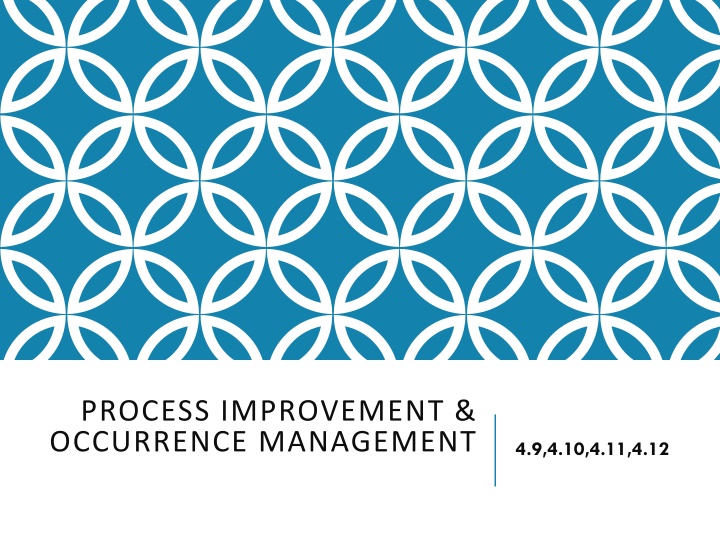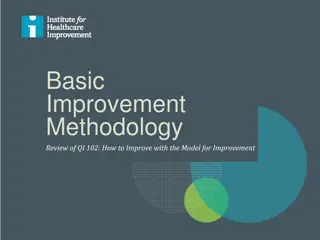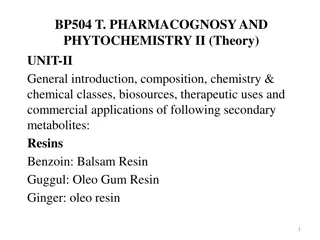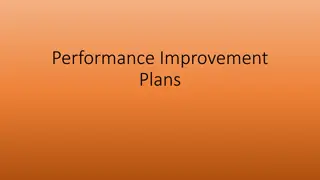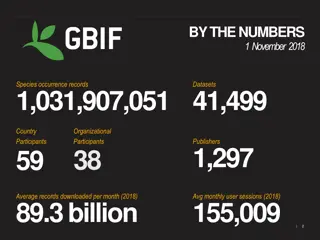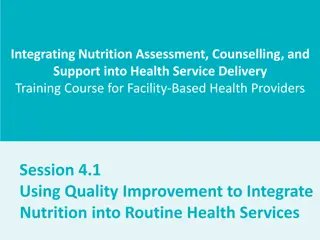Process Improvement & Occurrence Management
"This content covers non-conformances, quality indicators, tools for process improvement, occurrence management, sample formats for reporting incidents, process improvement goals, quality indicators, data collection for monitoring, and examples of quality indicators in a lab setting."
Uploaded on Apr 04, 2025 | 0 Views
Download Presentation

Please find below an Image/Link to download the presentation.
The content on the website is provided AS IS for your information and personal use only. It may not be sold, licensed, or shared on other websites without obtaining consent from the author.If you encounter any issues during the download, it is possible that the publisher has removed the file from their server.
You are allowed to download the files provided on this website for personal or commercial use, subject to the condition that they are used lawfully. All files are the property of their respective owners.
The content on the website is provided AS IS for your information and personal use only. It may not be sold, licensed, or shared on other websites without obtaining consent from the author.
E N D
Presentation Transcript
PROCESS IMPROVEMENT & OCCURRENCE MANAGEMENT 4.9,4.10,4.11,4.12
CONTENTS Non-conformances Quality Indicator & Selection of Quality Indicator Monitoring of QI Tools for process Improvement (PDCA, RCA, Process Mapping, 5S, FMEA, Trend analysis)
OCCURRENCE / NON CONFORMING EVENT MANAGEMENT Have a program to: Identify occurrences: Capture all NCE/ Incident/ Accident Investigate Immediate action Corrective Action Root Cause analysis Preventive action Document and Review
Annexure H: Sample Format for NCE/Incident/ Occurrence/Accident reporting and immediate, corrective and preventive action taken Date/Time Non-Conforming Event / Incident / Accident Clause No (ISO 15189) Department Reported by Immediate Action Corrective Action RCA (Root cause analysis) Preventive Action Time Taken for resolution Sign QM Sign of Lab Director
PROCESS IMPROVEMENT GOALS Understanding an existing process/s Introduce process changes to improve quality, reduce costs, or accelerate schedules Defect reduction and prevention
QUALITY INDICATORS (QIS) QIs are indicators of quality improvement: are used to gauge performance of all lab phases: pre analytical/post analytical/analytical QIs are evidence based: They can be rate- or mean- based, providing a quantitative basis for quality improvement create basis for continuous quality improvement and prioritization
DATA COLLECTION FOR MONITORING QIS Formulate a system Develop formats for data capture Monitoring: monthly, trend over a period of time Action plan Management Review 4/4/2025 LABS FOR LIFE PROJECT 8
EXAMPLES OF QUALITY INDICATORS Pre- Analytical Indicators Incomplete requisition Patient Identification accuracy Phlebotomy efficiency Sample acceptability rates Accuracy collected samples Inappropriate sample transport or storage Analytical Indicators IQC failure Post Analytical Indicators TAT Cross Cutting Number laboratory accidents of EQA failure # of amended reports Documentation related errors Customer complaints Numbers types of non- conformances Equipment failure Unavailability of samples archived and Inventory shortage of Technical problems Uncertainty of Measurement
TOOLS FOR PROCESS IMPROVEMENT Lean PDCA RCA Lab can choose any of the tool based on the need and purpose 5S Six Sigma
The tool or strategy selection should be based on the - - Identification of the bottlenecks and address the issue Uses Team approach and Involve all levels of staff
Improvement Tools Lean Optimizing space, time, and activity to improve the physical paths of workflow.
Path of workflow and maintenance by blood culture technologist Pre Lean Post Lean
DEMING PLAN- DO-CHECK-ACT The (PDCA) Cycle is the best way to confirm continual improvement It is a four step looping process: Plan identify the problems and potential sources of any system weakness or error by implementing a regular structured review. Do implement the plan and put it into action. Check this refers to the monitoring process to assess the effectiveness of the action using focused review and audit. Act Implementing the action plan in accordance with the review and audits. Take a corrective action and re-check to ensure its effectiveness.
ROOT CAUSE ANALYSIS (RCA) Four Major Steps in RCA The RCA is a four-step process involving the following: 1. Data collection. 2. Causal factor charting 3. Root cause identification. 4. Implement corrective action
TREND ANALYSIS Why Do Trend Analysis Comparing one time period to another Comparing one group to another Making future projections Comparing with other organizations Applications in Laboratory Medicine with an example - Consumptions of Reagents over a period (daily, weekly, monthly, and annually) - Peer group analysis (EQAS reporting) comparison with many labs - To observe patient load in laboratory department wise, test wise etc. - To see the trend of CV of various parameters to see the quality
ACKNOWLEDGEMENT Thematerial in this PPT has been compiled from multiple open sources such as Textbooks, Manuals, National and International Guidelines, Review Articles and related Websites. It has also drawn from Labs for Life Training Modules. All sources are duly acknowledged.
